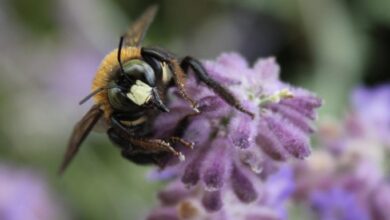Nectar plants
-

Natural vs. Artificial Pollination Techniques Which Yields Better Results
Pollination Techniques plays a critical role in agriculture, directly affecting the yield and quality of many crops worldwide, particularly fruit-bearing…
Read More » -

Discover the Best Nectar Plants for a Thriving Bee Habitat
nectar plants. Creating a thriving habitat for bees is essential not only for these vital pollinators but also for the…
Read More » -

Best Nectar Flowers for Bees Enhance Biodiversity in Your Backyard
Best Nectar Flowers for Bees thrive on nectar from flowers. Nectar is their primary food source, providing essential energy. It…
Read More » -

nectar rich plants for hanging baskets
Adding nectar-rich plants to hanging baskets is of great importance when it comes to attracting pollinators. These plants play a…
Read More » -

Buzzworthy Blooms 10 Flowers That Bees Can’t Resist!
Bees play a crucial role in pollination, aiding in the reproduction of flowers and the production of many fruits and…
Read More » -

what flowers have nectar for bees
what flowers have nectar for bees, as they provide a rich source of nectar. Nectar is a sugary liquid produced…
Read More » -

pollen and nectar rich plants
Pollen and nectar rich plants play a vital role in supporting the health and survival of pollinators such as bees,…
Read More » -

The Buzz on Bee Nutrition: What Do Bees Eat?
What Do Bees Eat. The world of bees is a fascinating one, filled with intricate behaviors and vital ecological roles.…
Read More » -

Plants That Produce Pollen and Nectar: A Guide for Beekeepers
A Successful beekeepers For successful honey production, beekeepers need to have a solid understanding of the nectar- and pollen-producing plants…
Read More » -

What should you know about Nectar and Pollen Plants as a beekeeper
An intimate knowledge of the clover acreage in any given district should be sufficient guide to its suitability for honey…
Read More » -

The interesting tour inside the beehive: what can we see in the bee colony
Bees appeared on Earth for the first time 130 million years ago, meaning that they passed through the age of…
Read More » -

Bee Waggle Dance
Bee Waggle Dance Foraging or scouting bees (on average 5-25% of foragers who are the oldest and most experienced, while…
Read More » -

Is Pine Honey the best kind of honey?
What is Pine Honey? It is a distinct kind of honey than blossom honey and is also referred to as…
Read More » -

What advantages does capers honey have?
Capers taste like honey. One of the tasty capers honeys is capers honey. The substance immediately crystallizes and is yellow…
Read More » -

LEARN everything you want to know about nigella sativa honey.
Where is the source of nigella sativa honey? Bees produce nigella sativa honey, often known as “black cumin honey,” by…
Read More » -

A planet called bee bread OR Borage
Describing bee bread (Borage) The Origin of bee bread (Borage): This plant’s original habitat, where it grows in its…
Read More »


















